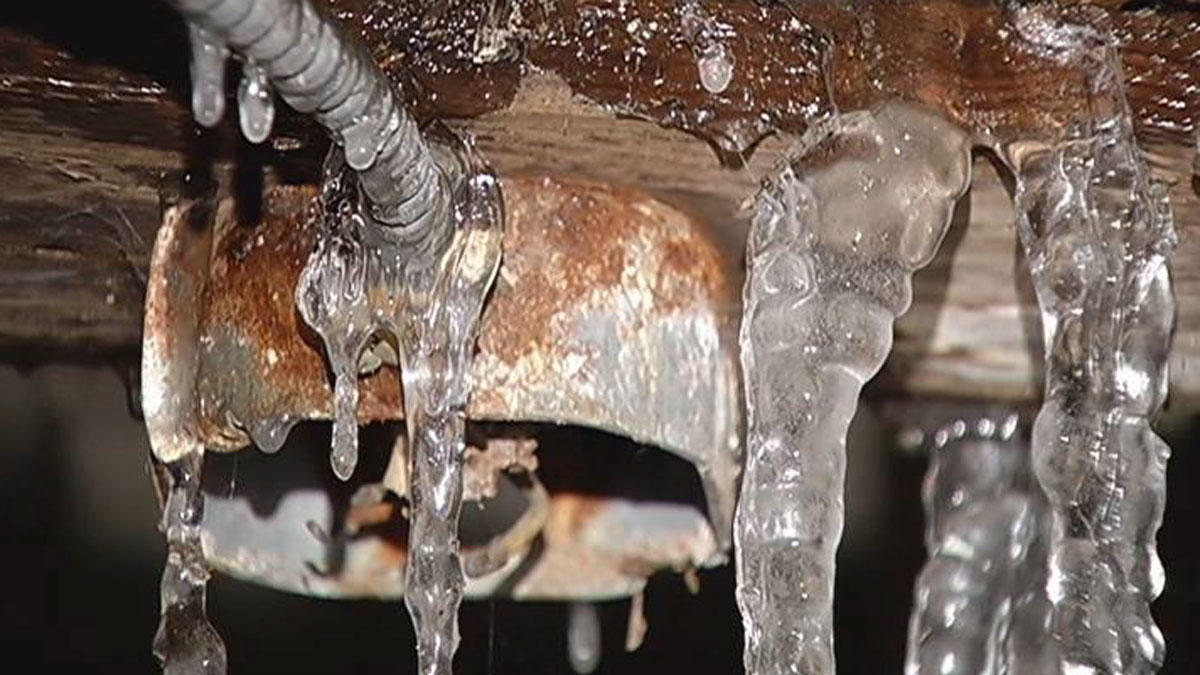Protecting Your Pipes from Freezing Damage: Critical Tips
Protecting Your Pipes from Freezing Damage: Critical Tips
Blog Article
The article author is making several good observations about Winter Plumbing Precautions: Preventing Frozen Pipes in general in the content below.

Winter can wreak havoc on your pipes, particularly by freezing pipelines. Right here's exactly how to avoid it from happening and what to do if it does.
Intro
As temperature levels decrease, the risk of icy pipes rises, potentially bring about pricey repair services and water damages. Recognizing just how to prevent frozen pipelines is crucial for property owners in chilly climates.
Prevention Tips
Shielding at risk pipelines
Cover pipes in insulation sleeves or utilize warmth tape to safeguard them from freezing temperatures. Concentrate on pipes in unheated or outside areas of the home.
Home heating strategies
Keep indoor spaces sufficiently warmed, particularly locations with plumbing. Open up closet doors to enable cozy air to circulate around pipelines under sinks.
Just how to recognize frozen pipes
Seek reduced water flow from faucets, unusual odors or sounds from pipelines, and visible frost on subjected pipes.
Long-Term Solutions
Architectural modifications
Take into consideration rerouting pipes far from outside wall surfaces or unheated areas. Include added insulation to attic rooms, cellars, and crawl spaces.
Updating insulation
Buy high-grade insulation for pipes, attics, and wall surfaces. Proper insulation helps keep regular temperatures and lowers the danger of icy pipes.
Securing Outdoor Plumbing
Yard hose pipes and outdoor taps
Separate and drain pipes garden hoses before winter. Install frost-proof faucets or cover exterior faucets with shielded caps.
Comprehending Frozen Pipes
What creates pipelines to ice up?
Pipes freeze when subjected to temperature levels below 32 ° F (0 ° C) for expanded periods. As water inside the pipes freezes, it increases, putting pressure on the pipe wall surfaces and potentially causing them to burst.
Threats and problems
Frozen pipes can lead to supply of water disturbances, building damage, and expensive repair work. Ruptured pipes can flood homes and create substantial architectural damage.
Signs of Frozen Pipes
Recognizing icy pipes early can stop them from bursting.
What to Do If Your Pipelines Freeze
Immediate activities to take
If you presume frozen pipelines, maintain taps open up to eliminate pressure as the ice thaws. Utilize a hairdryer or towels soaked in hot water to thaw pipelines gradually.
Final thought
Avoiding frozen pipelines calls for positive steps and fast reactions. By recognizing the reasons, indications, and preventive measures, homeowners can secure their plumbing during cold weather.
6 Proven Ways to Prevent Frozen Pipes and Protect Your Home
Disconnect and Drain Garden Hoses
Before winter arrives, start by disconnecting your garden hoses and draining any remaining water. Close the shut-off valves that supply outdoor hose bibs and leave the outdoor faucet open to allow any residual water to drain. For extra protection, consider using faucet covers throughout the colder months. It’s also important to drain water from any sprinkler supply lines following the manufacturer’s directions.
Insulate Exposed Pipes
Insulating your pipes is an effective way to prevent freezing. Pipe insulation is readily available at home improvement stores and is relatively inexpensive. Pay close attention to pipes in unheated areas such as the attic, basement, crawl spaces, or garage. Apply foam insulation generously to create a buffer against the cold. You can also wrap your pipes in heat tape or thermostat-controlled heat cables for added warmth.
Seal Air Leaks
Inspect your home for any cracks or openings that could let in cold air. Seal any holes around the piping in interior or exterior walls, as well as the sill plates where your home rests on its foundation. Additionally, make sure to keep your garage door closed unless you’re entering or exiting. Leaving it open creates a significant air leak that can lead to frozen pipes.
Allow Warm Air Circulation
During cold snaps, it’s essential to allow warm air to circulate evenly throughout your home. Leave interior doors ajar to promote better airflow. Open kitchen and bathroom cabinets to help distribute heat consistently around the rooms. If you have small children or pets, be sure to remove any household chemicals or potentially harmful cleaners from open cabinets for safety.
Let Faucets Drip
A small trickle of water can make a big difference in preventing ice formation inside your pipes. When temperatures drop significantly, start a drip of water from all faucets served by exposed pipes. This continuous flow helps prevent the water from freezing. Additionally, running a few faucets slightly can relieve pressure inside the pipes, reducing the chances of a rupture if the water inside does freeze.
https://choateshvac.com/6-proven-ways-to-prevent-frozen-pipes-and-protect-your-home/

Hopefully you liked our piece about How to Prevent Your Pipes From Freezing. Thanks a lot for taking the time to browse our blog. Sharing is good. Helping people is fun. I value your readership.
Click Here Report this page